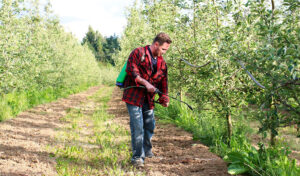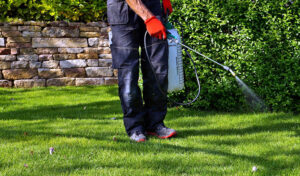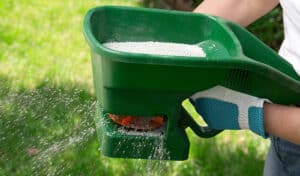White grubs are the immature stage of scarab beetles and primarily feed on turfgrass roots. The May/June beetle, masked chafer, and black turfgrass Ataenius are established in Utah.
The Japanese beetle was introduced into the Orem area in 2006, but an eradication program has currently minimized its population. Brown patches in the grass from grub feeding injury often aren’t apparent until late summer in otherwise healthy turf. Heavily damaged turfgrass can feel spongy, pull up easily, and tear away from the roots that have been chewed off. When full-grown, white grubs range in length from 3/8 to 2 in. and form a C-shape when at rest.
Grubs bear three obvious pairs of legs near their head end. The life cycle of different white grub species varies from one to several generations per year (Fig. 8). Economic thresholds for white grubs vary with species due to body size and feeding intensity: 3-5 per ft2 for May/June beetle, 8-10 per ft2 for masked chafer, and 30-50 per ft2 for black turfgrass Ataenius.
Turf/soil sampling is most effective with a golf cup-cutter or by cutting 6 in. × 6 in. squares on three sides with a hand trowel. Carefully examine the root zone and estimate the number of grubs per ft2.
Biological control by natural predators and supplementation of pathogens, such as beneficial nematodes and fungi, can help maintain grub populations below economic thresholds; however, when damage is detected, control with insecticides is often necessary.
Table 1 provides a listing of control products and optimal timing to target susceptible life stages. It is critical to reducing the thatch layer to no more than 1/2 in. deep and/or to aerate the soil to enhance chemical penetration, and to apply 1/2 to 3/4 in. of water after application to move insecticides into the root zone.
Repeat irrigation every 4-5 days to continue chemical movement into the soil. Long-lasting clean-up of white grubs often requires several years of treatment.






